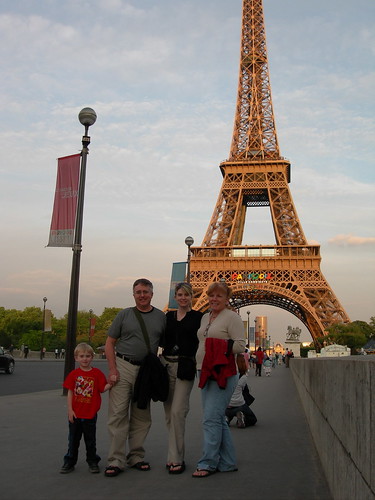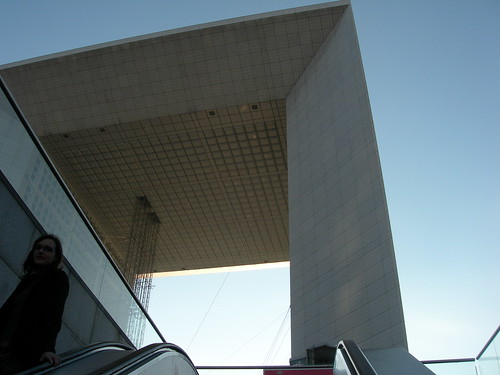STATIC ANALYSIS
HIV/AIDS Vaccine Industry
Rating the Five Forces of the HIV/AIDS Vaccine Industry (5 = strong, 1 = weak)
1. Threat of New Entrants - 3
a. Barriers to Entry
· High front-end capital investment costs in research and development (R&D).
· Difficulty in raising private funds for capital investment due to risky and expensive scientific uncertainties, especially in the area of understanding the virus (Ainsworth and Batson, 2001).
b. Experience Effects
· Five companies dominate the landscape with 93% of the market share:
Aventis Pasteur, GlaxoSmithKline (GSK), Wyeth, Merck and Chiron (Kalorama, 2004). These corporations have the infrastructure and consortia in place thus creating other cost advantages over new entrants.
· HAART (highly active anti-retroviral therapy) has been successful in decreasing HIV/AIDS mortality rates yet HIV/AIDS cases are still on the rise (Savopoulos, 2004). The opportunity for new vaccines for other facets of the disease are always in demand.
· Although the dominant companies have compounds and vaccines in several stages of the pipeline process, success is not guaranteed. The pipeline process may take from 15 – 20 years from the R&D phase until the approval phase (HIV R&D, 2001). Recently a new strain of HIV, known as HIV 2, made headlines on February 12, 2005 (MSNBC, 2005). This new strain is resistant to all HIV/AIDS vaccine and medications. The vaccines at various points in the pipeline may become obsolete. These companies will have to take previous data and create a new strategy allowing for this new strain of the virus. During this time, new companies have the opportunity to enter into the market.
· Shift from technological based acquisitions toward production based acquisitions thus allowing an opening with in the market for companies with production capabilities (Van Arnum, 2003).
c. Distribution Access
· The company securing the patent on the HIV/AIDS vaccine should not have difficulty in distribution in the United States. The FDA approval process may be delayed at times therefore delaying distribution into the market place.
· The problem lies within getting access in other countries where the governmental regulations and cultural differences have the potential to create a barrier for entry into those foreign markets (Kalorama, 2004).
d. Government
· Changes in government regulation has created an increase in research costs from the late 1990s that have quadrupled from $80 million to $100 million dollars up to $350 million dollars per each product. This increase results from the increase in the requirements of necessary data for approval by federal standards (Navarro, 1997).
e. Product Differentiation
· Product differentiation does not pose any barrier to entry at this time. HIV/AIDS is a life threatening disease that has no proven cure at this time. Marketing is not needed for this type of vaccine.
2. Bargaining Power of Suppliers – 4
a. Concentration
· No substitute available for capital equipment (or laboratory equipment) as the technology is extremely sophisticated and specialized. In order to conduct R&D in-house, the companies must purchase this equipment from these suppliers at the price they dictate in addition to having the capability to utilize the technology.
· The top four companies have in-house R&D capabilities. Smaller companies working on HIV/AIDS vaccines do not have the capacity and must rely on smaller academic institutions and companies to provide “bioprocess development and manufacturing” (IAVI, 2005).
· High costs result from clinical trials. The average cost for a single trial begins around $30 million (Ainsworth and Batson, 2001). Patient pools must be rather large, up to 10,000 patients, as to yield proper results in the testing. Since 2000, the number of candidates in trials has doubled.
b. Organization
· Protection of intellectual property factors prominently as the top manufacturers produce the viruses, processes and chemicals in-house. Outsourcing is not an option for these top manufacturers as they are seeking patents for their product (Feliza, 2003). Higher margins and higher pricing are possible as a result.
· According to organizations such as the IAVI (International AIDS Vaccine Initiative), if a company receives funding for R&D, then they must set the price of the vaccine to be affordable in developing nations (http://www.iavi.org).
c. Government
· Shift in demands since 9|11 results in the focus to meet needs for critical vaccines to save lives (Wechsler, 2002). This shift affects FDA policy development, which affects the emphasis of federal government funding for R&D. The development of HIV/AIDS vaccine falls under this category.
· Patent suppliers and FDA approval costs have increased significantly. After the Vioxx case (recently taken off the market), the FDA recently requested more funding for the post-approval monitoring process.
3. Bargaining Power of Buyers – 1
a. Differentiation
· Guaranteed market for these vaccines creating a “seller’s market”.
b. Importance
· Buyers will purchase the vaccines based on need, not on price.
c. Importance of Quality
· Buyers will pay the price dictated by manufacturers if the vaccine is effective and of high quality.
· The focus will be on issues of quality along with manufacturer liability.
· Patent protection protects intellectual property thus allowing the manufacturer to dictate price of vaccine in most cases. So far only certain processes and chemicals have been patented, not a vaccine. Once a manufacturer obtains this patent that particular manufacturer will dictate the price. But as previously stated, manufacturer may be obligated to set the price of vaccine at an affordable price.
4. Threat of Substitute Products or Services - 4
a. Relative Price/Performance Trade-Off
· Currently the only options available for the prevention of HIV/AIDS are condom use and abstinence. Condoms are not 100% effective in the prevention of HIV/AIDS (IAVI, 2005).
· Although five companies dominate the current landscape, many more are vying for a position in the pipeline (Scrips, 2002). The first company to secure the patent for the vaccine will dominate the market.
· The arrival of the HIV 2 virus changes the dynamics of the landscape and creates uncertainty for products and services.
b. Switching Costs / Profitability
· The Bush Administration is pushing for a generic version of an HIV/AIDS vaccine to be made available for victims in underdeveloped nations such as Africa. Generics will affect the company that holds the patent. Intellectual property becomes an issue (Pharmaceutical Today, 2005).
5. Rivalry Among Existing Competitors -3
a. Market Growth
· The market is expected to increase 9 – 11% compounding annually (Scrips 2002).
· At this time, only five companies dominate the market. The market can sustain future growth as none of the companies has produced a successful HIV/AIDS vaccine, either therapeutic or prophylactic.
Company Market Share
Aventis Pasteur 30%
GlaxoSmithKline 18%
Wyeth 17%
Merck 17%
Chiron 11%
(Chart: Kalorama 2004)
Chiron is the newest company to become a major contender in the landscape. As recently as 1999, the top four companies dominated.
b. Barriers to Exit/Switching Costs
· Low barriers due to high entry capital costs. The top five companies have diversified product lines that create low barriers.
c. Diversity
· The trend shows an influx of companies moving toward the HIV/AIDS vaccine industry. Available opportunities are abundant in this area of vaccine research. Many unknown companies have an opportunity break into the vaccine pipeline.
Conclusion: The HIV/AIDS vaccine industry is undergoing a major shift in the landscape. Although the costs for entry into the market are high and uncertainty surrounds the scientific research and understanding of the virus, the market is poised for growth. There is a great need for development of both therapeutic and prophylactic HIV/AIDS vaccines yet the pipeline process may take a decade or more. The primary forces affecting this industry include the emergence of companies vying for the creation of an effective vaccine, government and private funding, application for patents and the issue of intellectual property rights in addition to the recent discovery of the newest strain of the virus, HIV 2.
COPYRIGHT 2005 : NOT TO BE USED WITHOUT THE PERMISSION OF THE AUTHOR.





